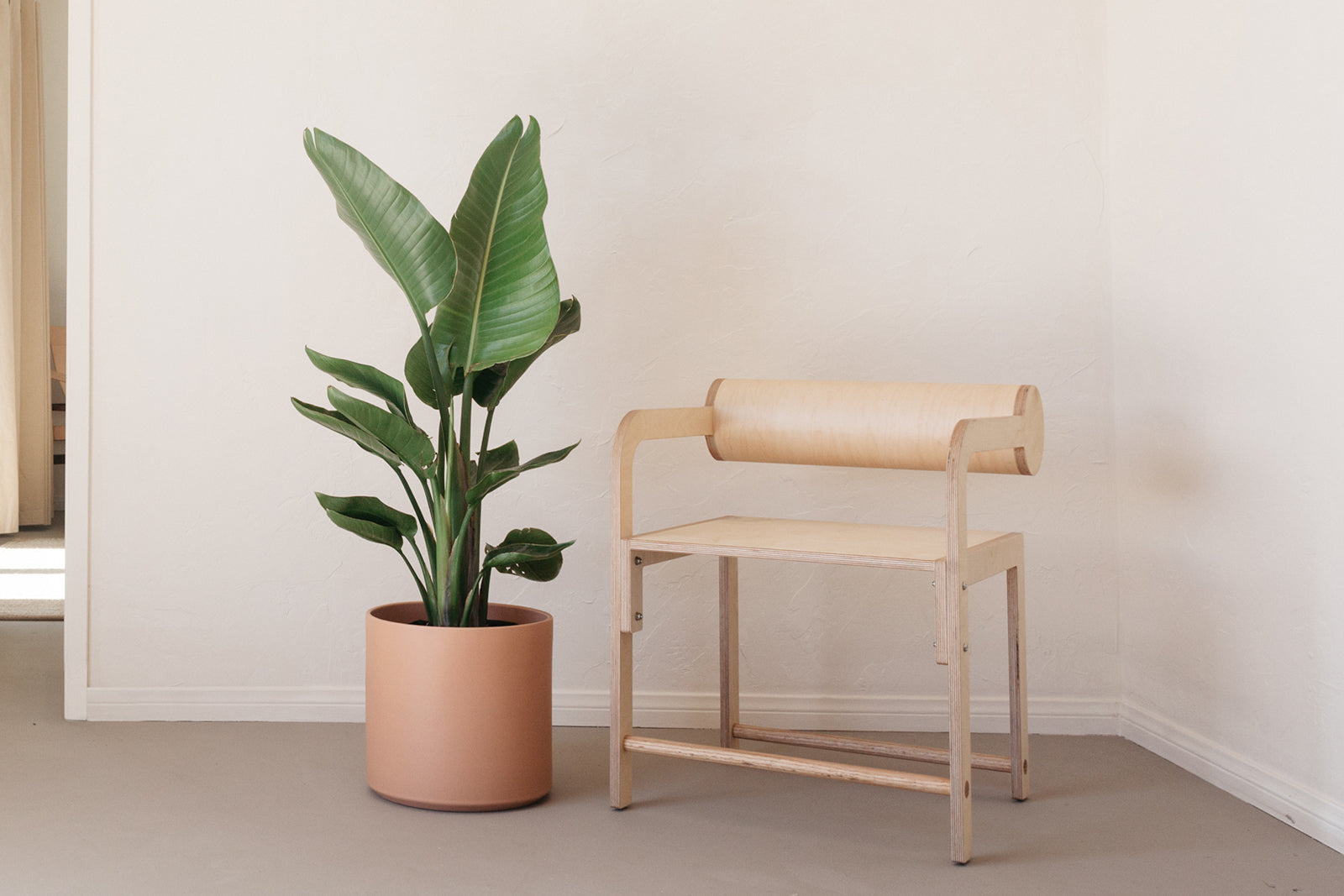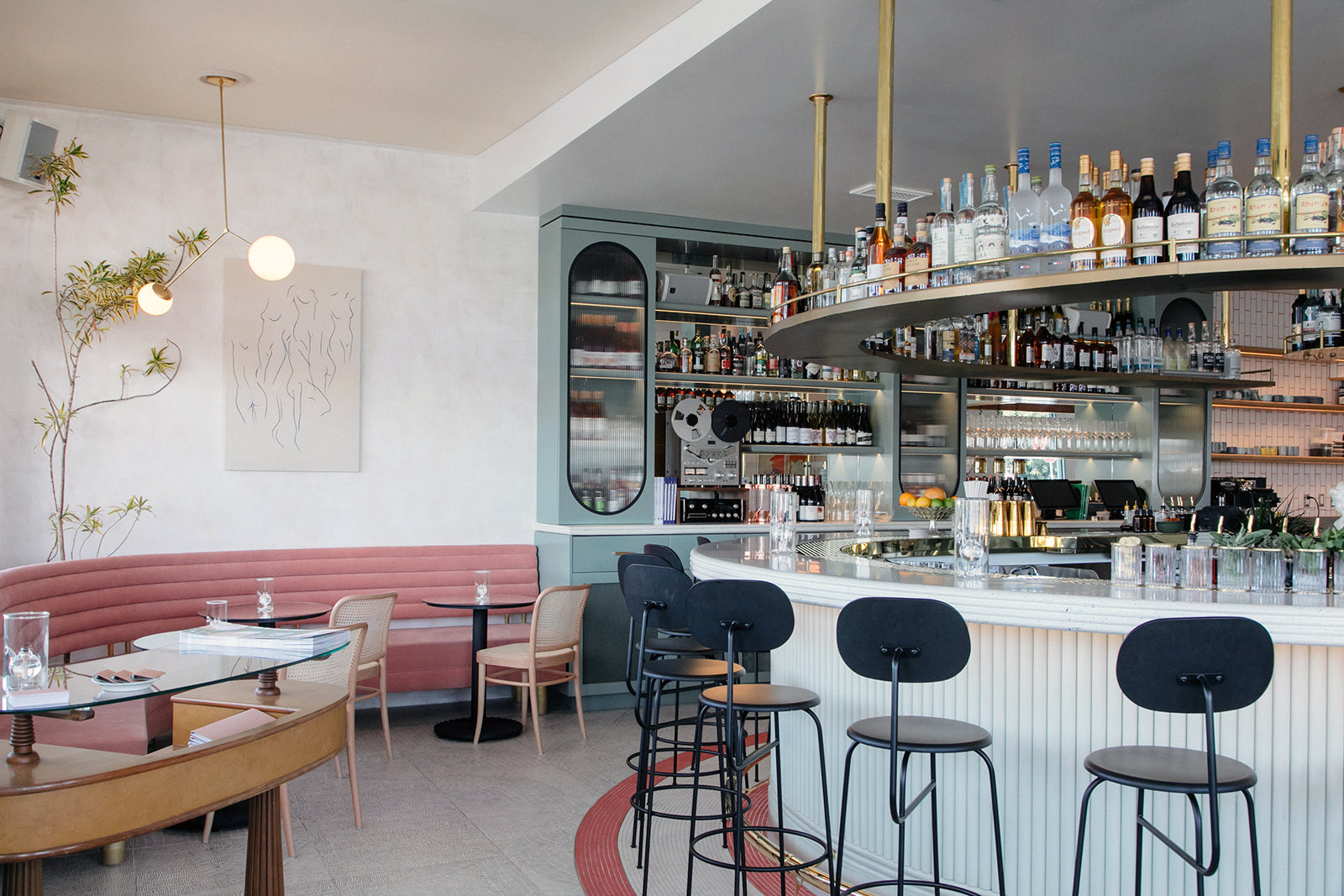
The Norden Guide to Taking Care of Houseplants
Are you a new plant parent? We’ve created the following plant guide to help ease your woes and ensure your plants continue to flourish. If you ever have any plant related questions, feel free to reach out to us at service@nordengoods.com.

Alocasia
Common Name: Elephant Ear
Sun: Bright, Indirect Sunlight
Soil Type: Loose, well draining potting mix.
Watering: Keep the soil moist but not soggy. Water less in Winter.
The Alocasia has a dramatic appearance and can grow to be quite large with the right care and attention. This plant prefers evenly moist soil with very bright, indirect light. The Alocasia prefers to be root-bound in smaller pots, so our stoneware planters should be a perfect fit.

Dypsis lutescens
Common Name: Areca Palm
Sun: Bright, indirect sunlight
Soil Type: Rich and moist
Watering: Allow the soil to dry out between waterings
Common in tropical regions, the Areca Palm prefers warm, humid temperatures and is averse to sudden, prolonged cold temperatures. While Areca Palms are fairly fast growing, they prefer to be housed in a tight container — as crowded roots will aid in keeping the plant size in check.

Strelitzia
Common Name: Bird of Paradise
Sun: Bright sunlight, including direct light
Soil Type: Peat mix with lots of drainage
Watering: Keep the soil continually moist but not waterlogged
A popular tropical plant, the Bird of Paradise can stand anywhere from 3’ to 8’ tall — so give it room to grow! This plant prefers adequate sunlight but can handle low light conditions for short periods of time. We suggest picking one of our larger earthenware planters that is 2”- 4” larger in diameter than the plant's pot.
Cacti
Sun: Bright, direct sunlight is necessary
Soil Type: Fast draining cacti mix
Watering: Water in the warm months when blooming, do not water in Fall/Winter
A cactus loves a warm, dry environment and requires very minimal watering — but lots of light. Be sure to place your cactus in a window or in a location where it will receive direct sunlight.

Calathea
Common Name: Rattlesnake Plant, Medallion
Sun: Light shade/indirect light
Soil Type: Fast draining soil
Watering: Keep the soil moist but not waterlogged, let drain
A very recognizable plant with expressive foliage, the Calathea Lancifolia has elongated leaves with a braided pattern. The leaves will curl up and react when your plant is thirsty — but don’t worry, this plant bounces back quickly once watered. This plant should receive ambient light, but be sure to avoid direct sunlight. For a smaller plant like the Calathea, we recommend selecting a planter 1”- 2” larger than your plant.
Calathea Medallion: Similar to the Calathea Lancifolia, the Calathea Medallion has a striking leaf shape and pattern — with foliage that reacts when dehydrated. The Calathea Medallion should receive bright ambient light and can be housed in one of our small, stoneware planters.

Dracaena
Common Name: Dracaena, Dragon Tree
Sun: Light shade/indirect light
Soil Type: Fast draining soil
Watering: Keep the soil moist but not waterlogged, let drain
Dracaena: A slow growing plant, the Dracaena loves a warm, humid environment with a minimal amount of water and light. Due to its large size, this plant should be housed in a planter 2”-4” larger in diameter than your plant — and should be replanted (even in the same planter) every 18-24 months.

Ficus Elastica
Common Name: Rubber Plant, Rubber Tree
Sun: Bright, filtered light
Soil Type: Fast draining soil
Watering: Keep the soil slightly moist but not waterlogged, let drain
Also known as a Rubber Tree, the Ficus Elastica is fairly hardy and easy to keep alive. Requiring only some indirect sunlight and water once in a while, our small stoneware planters provide the perfect home. Be sure to keep the leaves of your rubber plant clean for optimal photosynthesis!
Ficus Elastica Ruby: Also known as a variegated Rubber Tree, the Ficus Elastica Ruby has a tri-colored appearance and requires similar care to the Ficus Elastica. But to keep the colors bright and bold, make sure your plant receives lots of indirect light.

Ficus Lyrata
Common Name: Fiddle Leaf Fig
Sun: Bright, filtered light, some full sun
Soil Type: Fast draining soil
Watering: Let the soil dry out in between waterings
Most commonly known as the Fiddle Leaf Fig, this popular plant is notoriously tricky but with the proper care it can be easy. The Fiddle Leaf Fig likes a humid environment with lots of light — but be sure not to overwater it. These plants like their soil to dry out between waterings and will drown with soggy soil. Place your Fiddle Leaf in a planter 2” - 4” larger in diameter than the plant, our larger earthenware planters should do the trick.

Monstera Deliciosa
Common Name: Split Leaf Philodendron, Swiss Cheese Plant
Sun: Indirect sunlight
Soil Type: Well draining, peat based soil
Watering: Water deeply and let drain, don't let the roots sit in water
Also referred to as the Split Leaf Philodendron, this beautiful plant has uniquely defined leaves that can climb vertical surfaces. Due to its natural habitat, Monsteras prefer a humid environment with gentle sunlight and lots of water. Don’t choose a planter too large for your Monstera, as the roots could drown.
Epipremnum aureum
Common Name: Pothos, The Devil's Vine
Sun: Bright, indirect sunlight
Soil Type: Well draining potting soil
Watering: Let the plant dry out between waterings, if leaves droop, water
This little guy is easy to care for and grows with ease. The Pothos is a trailing house plant that thrives in bright, indirect sunlight and looks beautiful in one of our smaller stoneware planters. Pick a size that is 1”-2” larger than your plant.
Epipremnum aureum
Common Name: Prince of Orange Philodendron
Sun: Bright, indirect sunlight
Soil Type: Well draining potting soil
Watering: Let the top 1" of soil dry out between waterings
Keep this striking plant in a bright location in your home….but away from direct sunlight. With the right care, the colors of the Price of Orange Philodendron will transition as the plant matures — from yellow to orange all the way to green. Pair your plant with one of our earthenware planters that is 2” - 4” larger than its diameter.

Sansevieria
Common Name: Snake Plant
Sun: Bright, indirect sunlight, some full sun ok
Soil Type: Well draining, sandier potting soil
Watering: Let the plant dry out between waterings, underwatering is better with this plant
Commonly referred to as a Snake Plant, the Sansevieria is extremely tolerant and can survive in a variety of light conditions with a limited amount of water. Similar to a Rubber Plant, be sure to clean the leaves of this plant regularly so that it can photosynthesize normally. Pick your planter based on the size of your Snake Plant and plan to repot it as it grows, beginning every 12-28 months.


